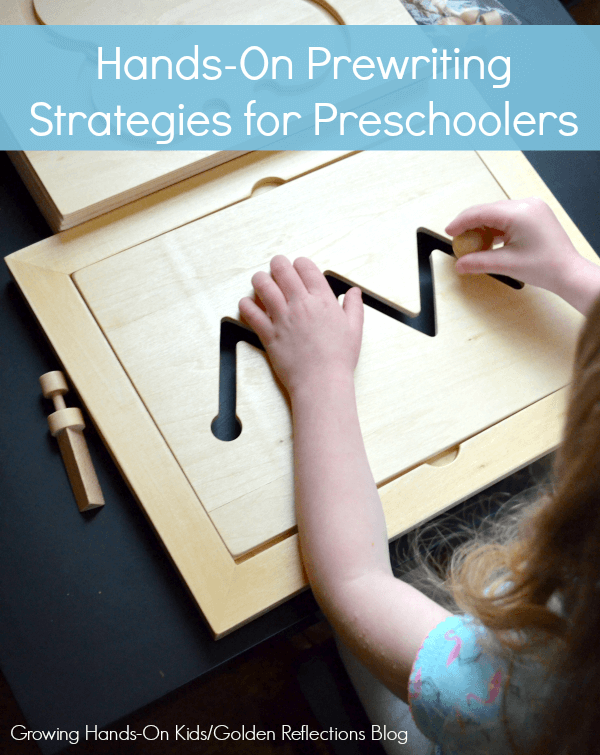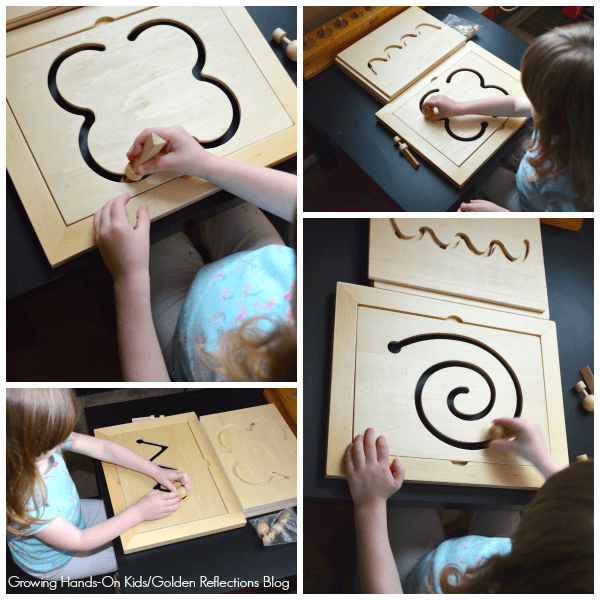Hands-On Prewriting Strategies for Preschoolers
Affiliate and Referral links are used below to promote products I love and recommend. I receive a commission on any purchases made through these links. Please see my disclosure policy for more details. As an Amazon Associate, I earn from qualifying purchases.
Preschoolers learn best by using their hands and exploring and doing. And when it comes to handwriting and prewriting skills, hands-on prewriting strategies are always best. Today I want to share some fun and engaging ways you can encourage your preschooler to explore the world of handwriting.
This is a sponsored post on behalf of Excelligence®/Discount School Supply. All thoughts and opinions are my own. I received monetary compensation and products for creating this post. See my disclosure policy for more details.
A quick note on what exactly prewriting skills are. Prewriting skills include lines and shapes that children learn in a developmental sequence that help prepare them for handwriting and letter formation later on.
They include:
- Vertical lines – (Age 2 imitates, age 3 copies/masters)
- Horizontal lines– (Age 2 imitates, age 3 copies/masters)
- Circle shape– (Age 2, age 3 copies/masters)
- Cross shape (+) – (Age 3 imitates, age 4 copies)
- Right/Left Diagonal Line – (Age 4)
- Square – (Age 4)
- X shape – (Age 4)
- Triangle (Age 5)
Once a child masters these lines and shapes they are often ready to begin more formal letter formation and handwriting learning. Remember however that each child will develop at their own pace and also have their own interests. You definitely want to follow their lead for when they are ready to start learning letter formation and more formal handwriting.
Tips for Prewriting Strategies for Preschoolers
Tip #1. Engage ALL the senses
This means going outside the box of worksheets and pencil/pens. Engage your child's sense through many different mediums and sensory experiences for prewriting. Some of these could include:
- Sand or salt tray tracing/writing
- Sand Paper Letters or Numbers
- Using Wikki Stix to form lines and shapes
- Using Play Dough to form lines, shapes and letters
- Use the prewriting motor skills set pictured below
A couple of things I really love about this prewriting motor skills set from Discount School Supply:
- It's wood which means even more great sensory input for prewriting
- The wooden frame makes it easy to switch out different lines and shapes and Ellie can do that herself
- It comes with two different grips or handles, a round knob and also a long triangle shape to simulate using a pencil
- It makes for a great addition to our tot school and preschool Montessori inspired shelves. Once I showed Ellie how to use it initially, she was able to do this independently and did so for about 15 minutes.
Tip #2. Use the same language and verbiage when talking about prewriting lines and shapes
For example, I like to say the following when talking about horizontal or vertical lines:
“Start at the top, big line down (or small line) down.”
“Start at the top, big line across (or little/small line across.” **Remember to start horizontal lines from left to right.
“Start at the top, circle around, STOP at the top.” (circle shape)
Once you pick how you are going to describe writing that shape or line, use that same wording or phrase consistently. You will find that your kids will start repeating it on their own and it gives them some auditory input to go along with the visual input of prewriting lines.
Tip #3. Follow your child's interests
Maybe you introduce prewriting lines at 2 1/2 years old or even older, maybe 4, and your child shows absolutely NO interest in it. That's okay! Follow their lead and their interests.
Maybe the way you introduced the lines or shapes doesn't engage them? Try a different way a few days or weeks later.
Maybe they are working on gross motor skills or language skills? Children tend to show lots of progress in one area and once they master it, move on to something else. Perhaps your child is showing a huge interest in reading or mastering a gross motor skill? Once they get a handle on that, they will most likely come back to the fine motor task.
That doesn't mean you don't provide them with ample opportunities to practice handwriting or prewriting skills. Always allow them to have access to the items or introduce them again a few days or week later in a different way to see if that peaks their interest. Once they are ready, they will show you and you will know!
For more prewriting and handwriting tips, check out my improving handwriting with kids page here on the blog.
Or follow my handwriting Pinterest board below.

Heather Greutman, COTA
Heather Greutman is a Certified Occupational Therapy Assistant with experience in school-based OT services for preschool through high school. She uses her background to share child development tips, tools, and strategies for parents, educators, and therapists. She is the author of many ebooks including The Basics of Fine Motor Skills, and Basics of Pre-Writing Skills, and co-author of Sensory Processing Explained: A Handbook for Parents and Educators.



I’d never thought to cater the activities to my children. That sounds terrible, but sometimes I can get caught up in trying to teach a principle that how they’re learning can become not as pressing of an issue. Thank you for taking the time to share and change my outlook on teaching!